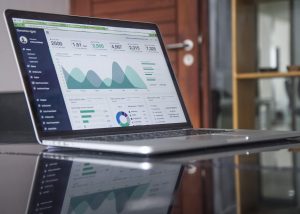In today’s world of so many competing websites and services, it can be hard to stand out, because of this, on-page optimization, has become a critical component of search engine optimization (SEO). By implementing effective on-page optimization strategies, you can enhance your website’s visibility, boost organic traffic, and ultimately improve your search engine rankings. In this article, you’ll find some of the best practices for on-page optimization that will help you achieve better results.
Understand the Importance of On-Page Optimization:
On-page optimization refers to the process of optimizing individual web pages to rank higher and attract more organic traffic. It involves optimizing various elements such as content, meta tags, headings, URLs, images, and internal linking structure. By paying attention to these on-page factors, you can provide search engines with relevant signals, improve user experience, and increase your website’s chances of ranking prominently in search engine results.
relevant signals, improve user experience, and increase your website’s chances of ranking prominently in search engine results.
Conduct Comprehensive Keyword Research:
Effective on-page optimization starts with thorough keyword research. Identify relevant keywords and phrases that your target audience is likely to use when searching for your products or services. Utilize keyword research tools to analyze search volume, competition, and identify long-tail keywords to target. Incorporate these keywords strategically into your content to improve its relevancy and increase the likelihood of ranking higher in search results.
Optimize Meta Tags and Headings:
Meta tags, including title tags and meta descriptions, play a crucial role in on-page optimization. Craft unique and compelling title tags that accurately describe each page’s content while incorporating relevant keywords. Similarly, optimize meta descriptions to provide concise summaries that entice users to click through. Additionally, utilize appropriate heading tags (H1, H2, etc.) to structure your content and emphasize important keywords and key points.
Create High-Quality and Engaging Content:
Content is king, and providing valuable, unique, and engaging content is fundamental for on-page optimization. Craft informative and well-structured content that addresses your audience’s needs and queries. Incorporate targeted keywords naturally within the content while maintaining readability. Utilize bullet points, subheadings, and other formatting techniques to enhance user experience and make your content more scannable.
Optimize Images and Multimedia:
Images and multimedia elements not only enhance user experience but also contribute to on-page optimization. Optimize images by compressing them without compromising quality, utilizing descriptive file names, and adding alt tags that include relevant keywords. This practice helps search engines understand the context and content of the images, improving their visibility in image search results.
Improve Page Loading Speed:
Page loading speed is a crucial factor in on-page optimization. A slow-loading website can negatively impact user experience and search engine rankings. Optimize your website’s performance by minimizing HTTP requests, compressing files, leveraging browser caching, and utilizing a content delivery network (CDN) if necessary. Regularly monitor and optimize your website’s speed to ensure fast and seamless user experiences.
Enhance User Experience (UX):
Providing a positive user experience is not only important for website visitors but also a key aspect of on-page optimization. Ensure your website is mobile-friendly, easy to navigate, and responsive across different devices. Optimize your website’s structure, internal linking, and navigation to make it intuitive and user-friendly. A great user experience can lead to increased user engagement, lower bounce rates, and improved search engine rankings.
Implement Schema Markup:
Schema markup is a structured data vocabulary that helps search engines better understand and interpret your website’s content. By implementing schema markup, you can provide additional context to search engines and increase the chances of your website appearing in rich snippets or other special search result features. This can significantly enhance the visibility and click-through rates for your web pages.
Monitor, Analyze, and Iterate:
Lastly, on-page optimization is an ongoing process. Monitor your website’s performance, track keyword rankings, analyze user behavior through tools like Google Analytics, and make data-driven decisions. Regularly revisit your content, meta tags, and other on-page elements to ensure they remain relevant and aligned with evolving search engine algorithms and user preferences.
On-page optimization is a crucial aspect of SEO that can significantly impact your website’s visibility and search engine rankings. By implementing the best practices outlined in this guide, you can fine-tune your website to provide relevant and engaging content, improve user experience, and increase your chances of ranking higher in search engine results. Remember to stay informed about the latest trends and algorithm updates to ensure your on-page optimization strategies remain effective in the ever-changing digital landscape. Happy optimizing!
Click here to schedule a consultation → consult
Click here to see our other blogs → blogs
Remember to listen to the Smarter Marketing podcast for more in-depth discussions on various digital marketing topics.
Click here to listen to our podcast → podcast